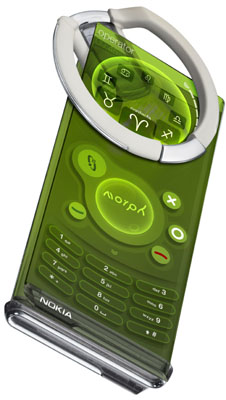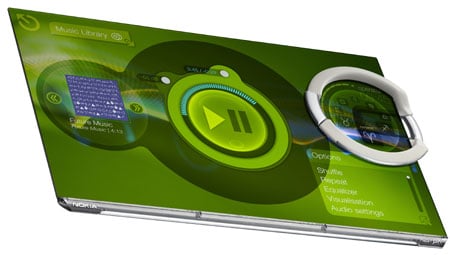Who Will Control the Heart of Handsets?
Symbian has a strong position among mobile operating systems, but announcements from Microsoft, LiMo, and others show the competition's heating up

Google's new software platform for mobile phones entitled 'Android' in its prototype form on demonstration at the Mobile World Congress in Barcelona Getty
In years past, when the mobile-phone industry gathered for its biggest annual convention, the talk was mostly about bells and whistles—who had the sexiest, thinnest, or most feature-packed handsets. Not this year. At the 2008 Mobile World Congress in Barcelona, Spain, the center of attention has shifted to the software inside phones that most consumers don't ever think about.
From flashy newcomer Apple (AAPL) with its hit iPhone, to gate-crashing Google (GOOG), to stalwart Nokia (NOK), the titans of tech are locked in a high-stakes battle for the heart and soul of mobile phones. At stake is nothing less than the future of mobile communication—and, by extension, of the Internet, as a growing number of consumers around the world access the Web from handheld devices.
It's no wonder operating systems have become the industry's new focus. The majority of today's handsets are still based on proprietary operating systems developed by makers such as Nokia and Motorola (MOT) for use in their own phones. These closed software environments are costly for makers to maintain and upgrade, limiting the opportunity for economies of scale that would be possible if phones from many makers shared common software.
What's more, by fragmenting the market, closed systems make life more difficult for operators and suppliers of mobile software and services. Paris-based Gameloft (GLFT.PA), for instance, the leading seller of mobile games, has to separately develop, test, and support hundreds of versions of every game it makes thanks to the lack of software standards in mobile phones and differences in operator network configurations.
Industry leaders are fed up. "Today there are 30 to 40 different operating systems for mobile, and that is too many," said Arun Sarin, the chief executive of Vodafone (VOD) during a Feb. 12 speech in Barcelona. "We need to narrow that range to three, four, or even five." To get there, Sarin urged his rivals to join forces in defining the handful of operating systems that could power mobile phones in the future.
Fight for Midrange Phones
Undoubtedly, one of the strongest contenders is London-based Symbian, a software maker owned by a consortium of phone makers including Nokia, Sony Ericsson, Samsung Electronics, and Panasonic. Symbian is already used in nearly half of the smartphones—high-end devices with computing capability—sold today. But to stay in the game, the company is scrambling to move its software onto less expensive midrange devices of the sort now powered mostly by proprietary homegrown operating systems.
It will face far stiffer competition there. Microsoft (MSFT) and BlackBerry maker Research in Motion (RIMM) are eyeing the same opportunity as they try to move beyond business-oriented devices into the consumer market. And the elephant in the room is search giant Google, which is spearheading an initiative called Android that seeks to create a Web-friendly software platform, based on open-source software, for midrange phones.








